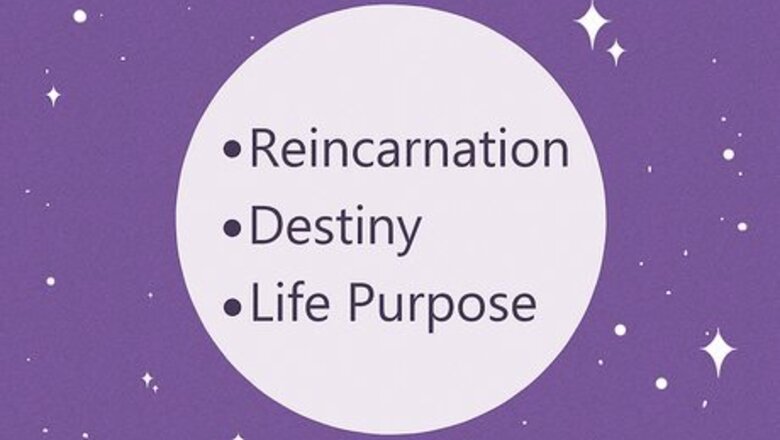
views
- Beauty marks have different spiritual meanings depending on their location and shape, but they often symbolize reincarnation or destiny across various cultures.
- In Christianity, a beauty mark is a sign of God’s divine love and protection, so many people believe it predicts luck and prosperity.
- A beauty mark on the forehead indicates wisdom, while one on the cheek denotes bravery and intelligence.
What do beauty marks mean spiritually?
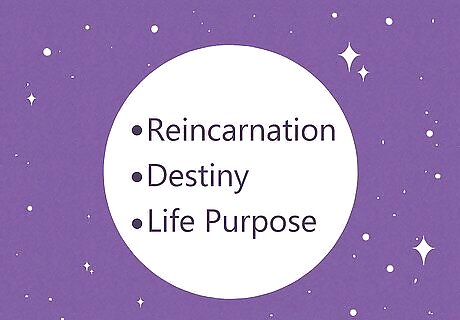
Beauty marks may symbolize reincarnation, destiny, or life purpose. Throughout history, people have used beauty marks to understand and connect with the Universe. Some cultures believe these spots represent wounds from past lives, while others consider them the mark of the devil. Depending on the location and shape of the mark, they can carry positive or negative connotations. For cultures that believe in reincarnation, a beauty mark can indicate battle scars or the tribe you were connected to in a previous life. In Christianity, a beauty mark is a symbol of God’s unconditional love and protection. Since it’s considered a gift from the divine, many people believe it foreshadows luck and prosperity. Beauty marks in the shape of a star, crescent moon, or sunburst are considered a positive sign from the Universe. They indicate you have a strong connection to the cosmos, especially if it echoes your sun sign. Heart-shaped beauty marks represent universal love, and they can help you determine if you’re meant to be with someone. If you have one and your partner does too, interpret it as a sign that you’ve met your twin flame: matching marks confirm that you’re two halves of the same soul.
Beauty Mark Meaning by Location
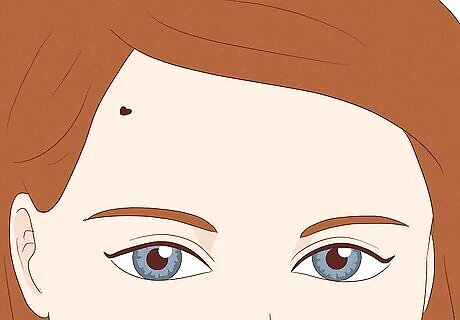
Forehead In general, a beauty mark on the forehead denotes wisdom. People with this feature are energetic and diligent, so they’re likely to experience a successful career and marriage. A beauty mark on the right side of the forehead means you are a wonderful partner. A beauty mark on the left side of the forehead foreshadows bad luck. A beauty mark in the middle of the forehead means you are wise and insightful.
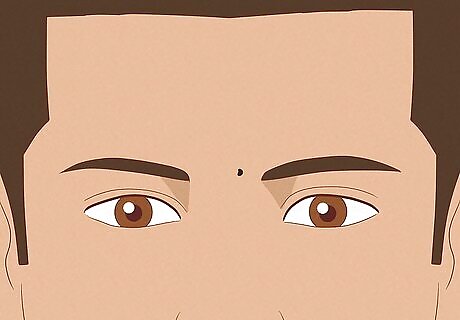
Eyebrow A beauty mark in the eyebrow indicates luck and prosperity. People with this mark are usually responsible, especially when it comes to wealth—they might be rich, but they hide their money well. A beauty hidden within the eyebrow indicates you’re a natural leader, and your skills and talents may lead to fame. A beauty mark on the right side of the eyebrow foreshadows a happy marriage and family life. A beauty mark on the left side of the eyebrow means you are a coward—you might face difficulties in your professional life because you rely too heavily on others. A beauty mark located in the middle of the eyebrow means you are clever and find effective ways to accomplish tasks.

Eyelid Unlike other beauty mark placements, there isn’t a general meaning for a beauty mark on the eyelid (or near the eye area). The symbolism behind this mark depends entirely on its location: A beauty mark on the left eye means you’re arrogant, pessimistic, and a little bit selfish. A beauty mark on the right eye indicates you are positive and hardworking; other people trust and respect you. A beauty mark on the lower eyelid may predict a large family with lots of children and grandchildren. A beauty mark below the eye means you may experience difficulties in life; it’s also known as the “tear mole,” and many people remove it because it’s considered a sign of bad luck. For women, a beauty mark on the right corner of the eye indicates success in finding a partner, while one in the same position signals wealth and a successful career for men.

Cheek A beauty mark on the cheek is seen as a sign of beauty, but it also indicates bravery and intellect. People with this feature are typically hardworking and studious, and they can achieve their goals independently. A beauty mark on the right side of the cheek means you are sensitive and family-oriented. A beauty mark on the right side of the cheek indicates you are introverted, with a bit of arrogance.
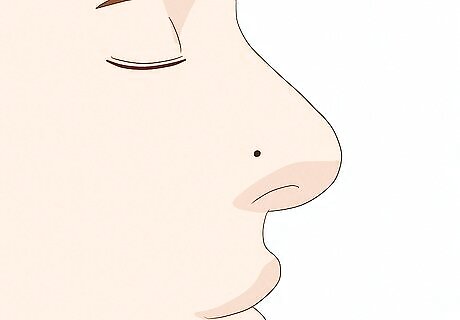
Nose A beauty mark on the nose represents high self-respect and a strong work ethic. People with this mark can make friends easily, but they may struggle when making decisions or managing their impulses. A beauty mark on the right side of the nose signifies you are passionate and may crave sex more than the average person. A beauty mark on the left side of the nose means you might face economic or health-related struggles. A beauty mark on the tip of the nose indicates you have a short temper, and you may struggle with thinking through your decisions. A beauty mark below the nose denotes sensuality and allure—you can attract the opposite sex effortlessly.
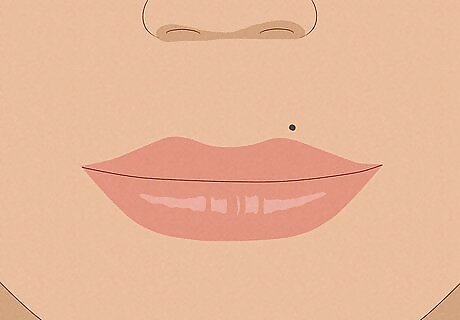
Lip While a beauty mark on the lips is considered a sign of beauty, it also carries major spiritual significance. People with this mark can expect to live a long, fruitful life filled with discovery and adventure. A beauty mark on the corner of the lip indicates you have a taste for the finer things in life. A beauty mark on the lower lip means you enjoy food, theater, and acting. A beauty mark on the upper lip means you are a warm and empathetic person.
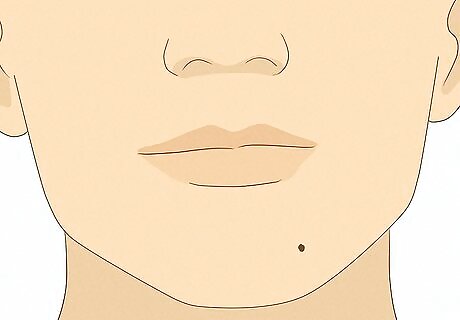
Chin A beauty mark on the chin signifies affection and positive character. People with this feature are usually caring, honest, and genuine, making them excellent friends and lovers. Due to the movement of this area, this mark can also symbolize travel and adventure. A beauty mark on the right side of the chin indicates you are logical and diplomatic. A beauty mark on the left side of the chin represents honesty and bluntness—you aren’t afraid to say what’s on your mind.
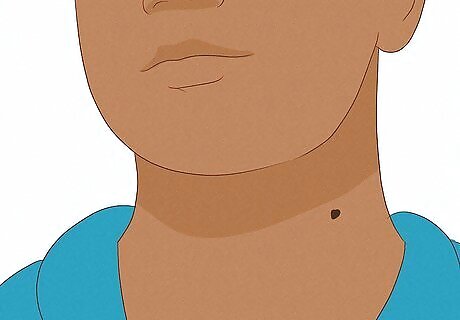
Neck In general, a beauty mark on the neck indicates an unstable life. People with this mark may face family, financial, or career-related struggles, so it serves as a sign to relax and take things slow, especially for those who tend to overwork. For women, however, it can also indicate patience and diligence; women who plan out their lives can achieve their goals with ease. A beauty mark on the front of the neck means you are creative and artistic. A beauty mark on the back of the neck indicates you might be aggressive.
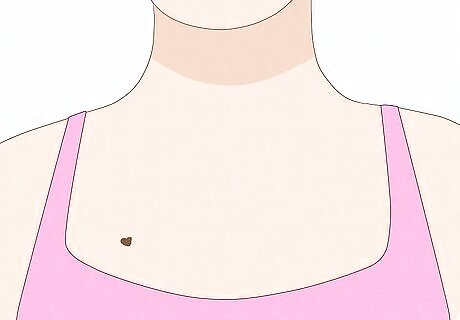
Chest A beauty mark on the chest is considered a sign of luck. People with this mark are ambitious and generous, while some cultures believe it predicts having kind-hearted children. For women, a beauty mark on the right side of the chest indicates you may acquire bad habits more quickly than others, while one on the left side means you are great at managing your relationships. For men, a beauty mark on the right side of the chest may signal financial issues in the future, while one on the left side indicates you have difficulty managing relationships.
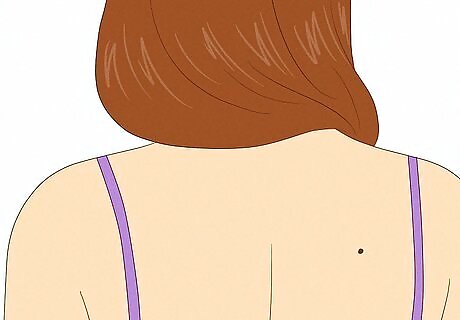
Back Typically, a beauty mark on the back represents bad fortune. People with this mark might experience betrayal from a close friend, family member, or colleague, or they may endure financial troubles. A beauty mark on the upper back signals you may endure struggles throughout life. A beauty mark on the lower back means you possess the strength and courage to overcome any obstacles.
History of Beauty Marks

Beauty marks have various meanings, depending on the time period. While they’re considered beautiful today, beauty marks haven’t always been perceived as attractive. People have embraced them, removed them, and even worn fake beauty spots to fit into society’s standards. Regardless of their reasons, there’s no denying the significance of the beauty mark throughout history: In Ancient Greece, beauty marks (also known as “olives”) could predict someone’s future. If you had one on the cheek, it indicated luck and prosperity, while one on the throat or back meant premature death. During the Ancient Roman era, people wore fake beauty marks to cover up the scars they received from being enslaved. In Imperial China, face reading (also known as Mian Xiang) was developed to provide insight into someone’s personality and destiny. During the Middle Ages, Europeans associated beauty marks with witchcraft, so many people burned or removed them to avoid persecution. In the 17th century, beauty marks became a fashion statement for the upper class: the French wore fake patches (or “mouches”) to emphasize their social status. During the 18th century, Europeans wore fake beauty marks to conceal their smallpox scars. In the early 20th century, beauty marks became a widespread symbol of attraction and allure. Stars like Marilyn Monroe and Elizabeth Taylor popularized the dark spot, which has continued to represent aesthetic appeal since then.
What is a beauty mark?
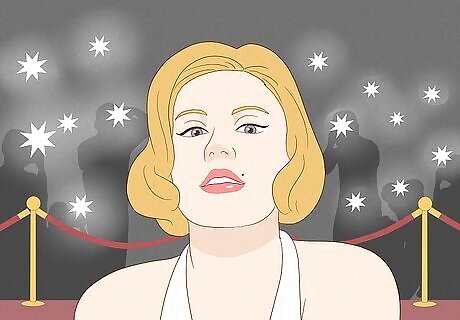
A beauty mark is a dark spot on the face that’s deemed beautiful by society. It’s a small cluster of pigment-producing skin cells that gives someone a unique or attractive look. While it’s technically the same thing as a mole, a beauty mark is typically considered “beautiful” when it’s dark and solid in color and complements someone’s facial features. In general, “attractive” beauty marks appear above the upper lip or the upper outer part of the cheek (think: Madonna, Cindy Crawford, and Blake Lively). A beauty mark, mole, and birthmark are all interchangeable, but a dark spot on the body isn’t considered a beauty mark. For example, a mole on your back or arm would just be labeled an ordinary mole.


















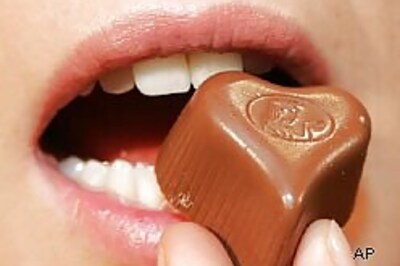

Comments
0 comment